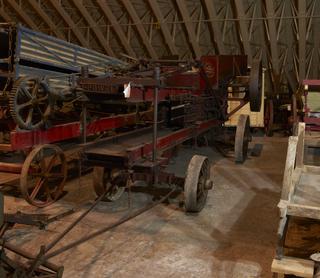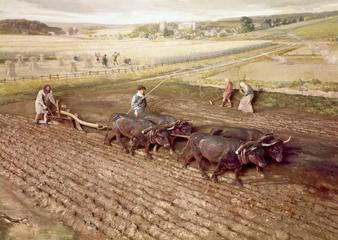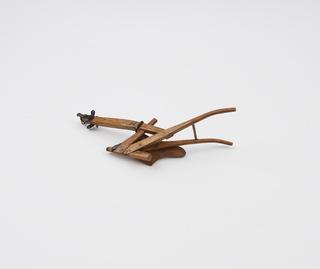
1:4 scale model of Jethro Tull's seed drill
- Made:
- 1695-1705 in unknown place
Model, scale 1:4, of Jethro Tull's seed drill, c. 1701.
Tull's seed drill of circa 1701 represented a major step towards the mechanisation of crop cultivation. The machine would be drawn by a horse and sowed three regularly spaced rows of wheat grains. This regular spacing, as opposed to broadcast sowing of seeds, made possible the introduction, also by Tull, of a horse-drawn hoe to remove weeds growing amongst the crop.
This scale model was made from information contained in Tull's "Horse Hoeing Husbandry" published in London in 1733. He was stimulated to produce an efficient seed sowing machine by the high cost of seeds which increased from 5s.Od. to 12s Od. in 1701. The mechanism was suggested to Tull, who was also an accomplished musician, by there groove tongue and spring of an organ soundboard. He had the first seed box made by a Soho Instrument maker and tried it out on a wheelbarrow.
The principle of operation depended upon a toothed portion of the wheel shaft which rotated against a spring held tongue, releasing seed at regular intervals as the drill moved forward. The seeds were then directed by guides attached to the shares cut channels for the seeds. The spacing of the seeds was controlled by the number of teeth around the wheel shaft.
Details
- Category:
- Agricultural Engineering
- Object Number:
- 1955-289
- Materials:
- wood (unidentified) and metal (unknown)
- Measurements:
-
overall: 220 mm x 520 mm x 774 mm,
- credit:
- H. Agutter & Associates




